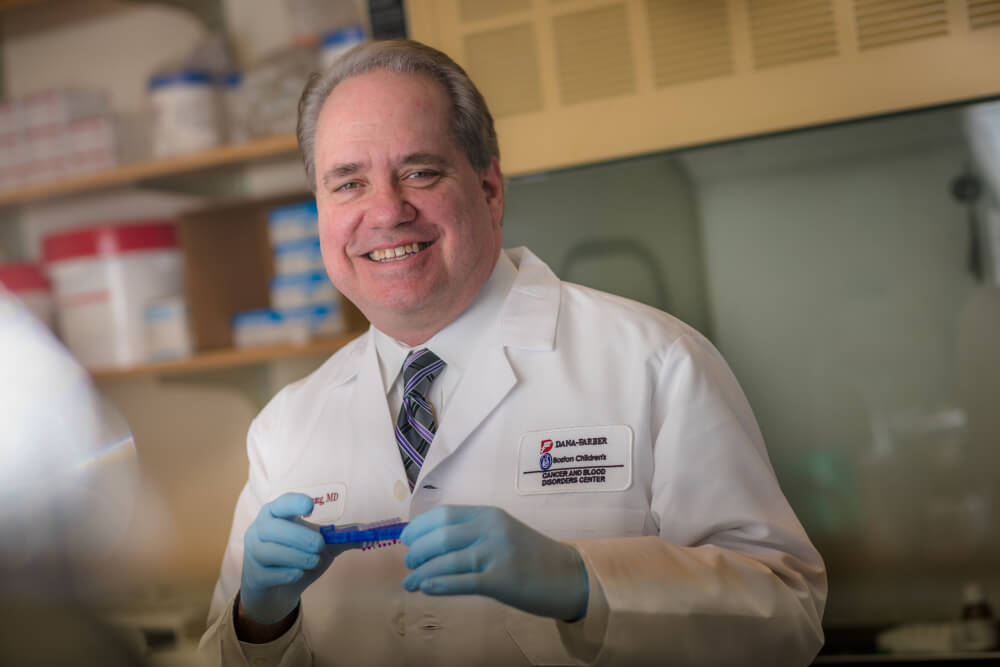The differences between cancers in adults and children go well beyond age. In many respects, they are markedly different diseases.
Perhaps the biggest divergence is that cancer is far more common in adults than children, largely because the genetic mutations that spur the disease can take years to accumulate and affect cell growth and division. Approximately 10,600 cases of cancer are diagnosed in children under age 15 in the United States every year, compared to more than 1.7 million in adults (not including the most common form of skin cancer), according to the American Cancer Society.
Some types of cancer are more prevalent in children. Nearly half of all pediatric cancers are leukemias or lymphomas, and an additional 26 percent are brain and central nervous system tumors. In adults, by contrast, leukemias and lymphomas account for less than 10 percent of all cancers, and brain and central nervous system cancers comprise less than 1.5 percent.

Some of the most common types of childhood cancer arise very infrequently in adults. These include neuroblastoma, which is very rare after age 10, and retinoblastoma, which is extremely rare after age 20. On the other hand, cancers classified as carcinomas, which arise in the skin or lining of internal organs or glands, account for 75 percent of adult cancers, but are very rare in children.
Beyond these patterns, there are differences in how quickly pediatric and adult cancers grow and spread, and, often, in their molecular make-up.
How Pediatric and Adult Cancers Act Differently
Childhood cancers tend to be more aggressive and progress more rapidly than adult cancers. But, with some exceptions, childhood cancers respond better to certain treatments than adult cancers do.
For example, the five-year survival rate (the percentage of patients alive five years after diagnosis) for children with Hodgkin lymphoma is 95 percent; 91 percent for those with non-Hodgkin lymphoma; 91 percent for those with acute lymphoid leukemia (ALL); and 73 percent for those with brain and other central nervous system tumors. The comparable figures for adults are 86 percent for Hodgkin lymphoma; 71 percent for non-Hodgkin lymphoma; 71 percent for ALL; and from less than 10 percent to more than 90 percent for brain and spinal cord tumors depending on the type of cancer and the age at which it occurs.

Because they often grow and spread rapidly, pediatric cancers are often diagnosed at a later, more advanced stage than adult cancers. By the time they’re diagnosed, 80 percent of pediatric cancers have already spread to other parts of the body, versus about 20 percent of adult cancers.
At a basic, genetic level as well, pediatric cancers display differences from adult cancers. Childhood cancer genomes (the entire collection of genes within a cell) often have few genetic mutations—as few as 10, in some cases, many of which are rare or absent in the cells of adult cancers—studies have found. By contrast, adult cancer cells often have numerous mutations, sometimes 100 or more.
Research has shown that some early-childhood cancers result from genetic mutations that occur during fetal development. But as with most adult cancers, the causes of the vast majority of childhood cancer are unknown. In adults, mutations are often caused by exposure to environmental factors such as cigarette smoke, asbestos, or ultraviolet radiation. Environmental links aren’t always apparent in children, partly because cancer is very rare in childhood and because of the difficulty in tracking what children were exposed to early in their development.
Learn more about care and treatment for adults and children from Dana-Farber Cancer Institute.
